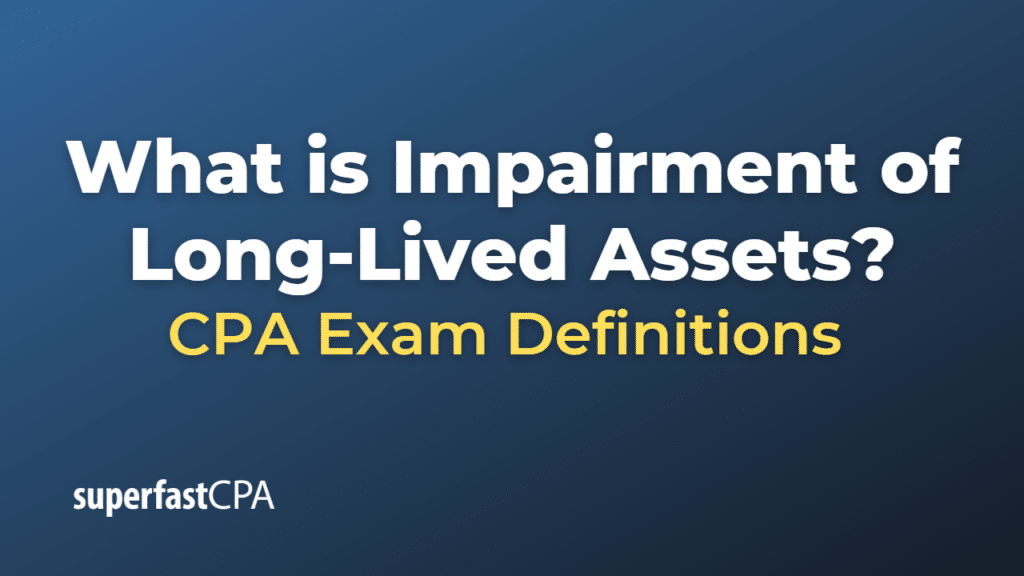Impairment of Long-Lived Assets
Impairment of long-lived assets refers to a significant and sudden decrease in the fair market value of a long-lived asset such as property, plant, equipment, or intangibles (like patents and trademarks) below its carrying value on the company’s books. The carrying value is the original cost of the asset less accumulated depreciation or amortization.
The concept of impairment is associated with the principle of conservatism in accounting, which states that potential losses should be recorded when they are discovered, but gains should only be recorded when they are realized.
Impairment usually happens when there is a sudden and unexpected decline in the market value of an asset, a significant change in the way the asset is used, damage to the asset, legal problems associated with the asset, or poor performance of the asset.
According to both International Financial Reporting Standards (IFRS) and U.S. Generally Accepted Accounting Principles (GAAP), if there are signs of impairment, a company is required to conduct an impairment test. If the test shows that the carrying amount of the long-lived asset is not recoverable (i.e., it is higher than the sum of the undiscounted future cash flows expected from the use and eventual disposal of the asset), an impairment loss is recognized. The amount of the loss is determined as the excess of the asset’s carrying amount over its fair value.
This impairment loss reduces both the value of the asset on the balance sheet and the profits on the income statement. It’s worth noting that while IFRS allows the reversal of impairment losses for certain types of assets if conditions change, GAAP generally does not.
Example of Impairment of Long-Lived Assets
Let’s take an example of a machinery manufacturing company, MachWorks Inc.
Let’s say that MachWorks purchased a high-tech machine for $500,000 ten years ago to help in its manufacturing process. The machine has been depreciating at a rate of ,000 per year, so its carrying value or book value on the company’s balance sheet today would be $300,000 ($500,000 – (10 years * $20,000)).
However, let’s suppose a new technology has recently emerged that renders the machine obsolete. Due to this technological advancement, the machine’s fair market value (what it could be sold for today) has dropped significantly to $200,000. Moreover, the estimated future cash flows from the machine, undiscounted, are expected to be only $180,000.
Under both IFRS and GAAP, an impairment test is required. The test compares the carrying value ($300,000) with the total undiscounted future cash flows ($180,000). Since the carrying value is greater, an impairment loss must be recognized.
The impairment loss is the difference between the carrying amount and the fair value of the machine. So in this case, it would be $300,000 (carrying value) – $200,000 (fair value) = $100,000.
This $100,000 loss would be recorded as an expense on the income statement, reducing the company’s profit for the year. Furthermore, the carrying value of the machine on the balance sheet would be reduced from $300,000 to $200,000.
Please note, this is a simplified example and actual impairment calculations might involve additional steps and considerations.













